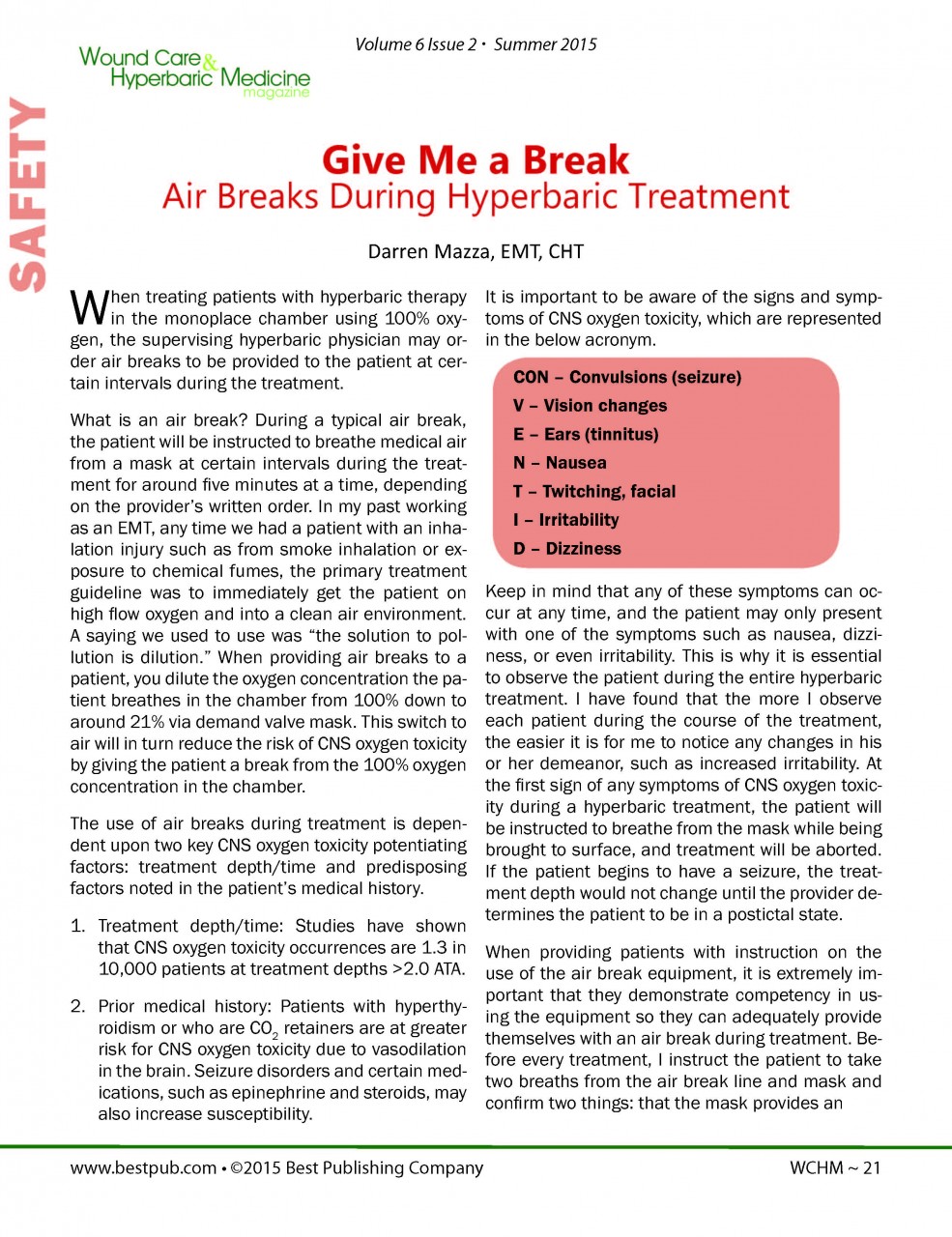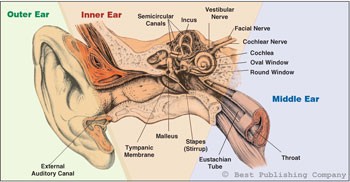Rx Pad
A question that we get frequent phone calls about is regarding physician supervision of Hyperbaric Oxygen Therapy (HBO). Here are the answers to some of the most frequently asked questions . . .
We have just opened a new clinical classroom in North Palm Beach, FL! Here are a few photos to give you the "insider scoop".
We receive a number of phone calls each week from folks inquiring how to become a Certified Hyperbaric Technologist (CHT). The added qualification of CHT is administrated by the National Board of Diving and Hyperbaric Medical Technology (NBDHMT).
Our industry partner, the Undersea and Hyperbaric Medical Society (UHMS) is running a "Join and Save" campaign that will save you hundreds of dollars on online CME/CEU courses.
Clinic and Hospital Administrators: Do you need to get your staff trained in hyperbaric medicine but have a limited budget?
When treating patients with hyperbaric therapy in the monoplace chamber using 100% oxygen, the supervising hyperbaric physician may order air breaks to be provided to the patient at certain intervals during the treatment.
This article will provide you with some background on liquid oxygen, which is the most common form of bulk storage for this gas. The manufacture, storage, basic design of a liquid oxygen converter, and general safety practices will be covered. Again, keep in mind that working around oxygen has its hazards, but working around a liquid oxygen system can be outright deadly if you have not been properly trained.
Sinus and internal and external ear disorders are the most common side effects of hyperbaric oxygen therapy (HBO2).1 These spaces are the cranium’s pneumatic sockets and, particularly those of the middle and inner ear, are most frequently involved in the pressure stress caused by compression and decompression maneuvers during exposure to altered pressures in the hyperbaric chamber. Barotrauma is the mechanical tissue damage produced by environmental pressure variation, and the middle ear is the most frequently involved structure in this kind of damage. According to Boyle’s law (the product of pressure and volume is a constant for a given mass of confined gas) it is easy to understand why all enclosed air cavities are more susceptible to this kind of lesion. Barotraumas can occur due to an increase or decrease of gas volume. To avoid gas volume decrease during the compression phase, the patient must perform some compensatory maneuvers aimed at inhaling and forcing gas (air or oxygen) into the nasal and sinus cavities. During decompression in the chamber or even underwater, the body’s gas expands and is expelled from cavities to the outside, usually without any active maneuver. It is essential to teach the patient about the functions of the hyperbaric chamber and the correct maneuvers of baro compensation. In this article, we will describe the main barotraumas that can occur during hyperbaric oxygen therapy.
Did you know that you can purchase online CME/CEU courses in bulk at a reduced rate? Save money by purchasing a course package to address all of your continuing education needs this year, or the needs of your clinic staff members!


![[Free Webinar] Introduction to the Role of Hyperbaric Safety Director](https://mail.woundeducationpartners.com/images/easyblog_images/176/b2ap3_large_Hyperbaric-Safety-Director-Course_w_20160223-163441_1.jpg)



